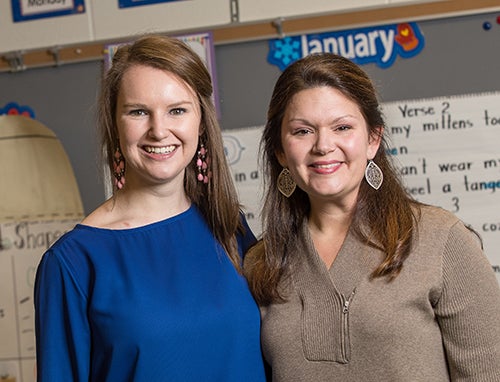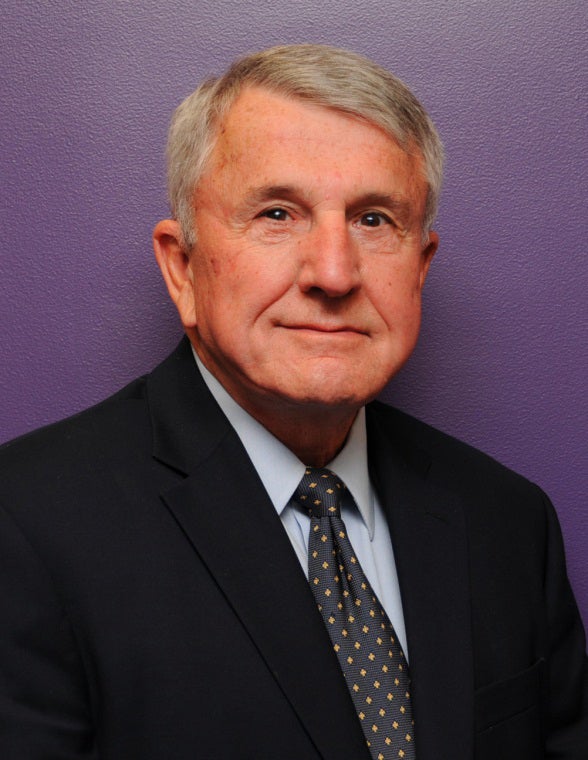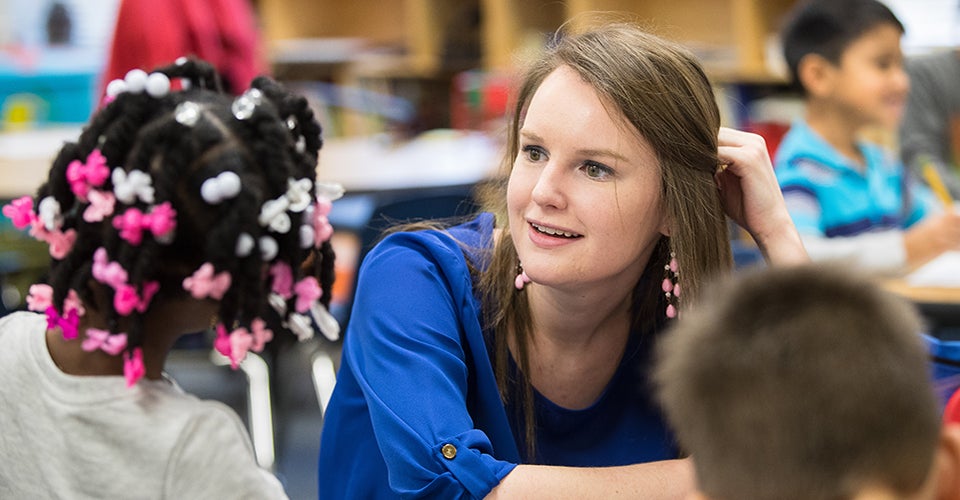Classroom Readiness
Latham Clinical Schools Network has supported ECU student teachers for 20 years
East Carolina University students like Emery Bowser are preparing to teach in their own classrooms one day through a unique network of schools in eastern North Carolina.
ECU’s College of Education established the Latham Clinical Schools Network in 1996-97 to provide field experiences for student teachers when state education programs were restructured from a 10-week student teaching requirement to a yearlong senior year experience.
The network started with nine school systems and has grown to 43 over two decades.
“The overall impact in 20 years is that approximately 70,000 early field placements and 9,600 student teachers have been able to learn in, while simultaneously contributing to, the public schools in the eastern region of the state,” said Dr. Vivian Martin Covington, executive director of the Office of Educator Preparation in the ECU College of Education, the largest professional educator preparation institution in the state.
Bowser, a senior elementary education major from Raleigh, has been teaching 23 kindergartners this year at Snow Hill Primary with veteran teacher and Snow Hill native Candace Griffin.

At left, ECU senior Emery Bowser has co-taught this year with veteran Snow Hill Primary teacher Candace Griffin.
Snow Hill is in Greene County, about 40 minutes from Greenville. One of the network’s original partners, the county has a population of about 21,000 people with 25 percent living in poverty, according to U.S. Census data.
“We’re in a rural poor county and we have struggling learners,” Griffin said. “We benefit because it gives us more hands. When you have more hands, you touch more students. The students are the ones who benefit in the end.”
Griffin said she and Bowser learn from each other. “They tell us the latest and give us extra ideas to use in the classroom,” Griffin said. “I think it’s helping me become a better teacher and it’s helping her become a good teacher too.”
Bowser worked at the primary school one day each week in the fall, and is working there every day this spring.
“The clinical schools network is very important not only to students but also to teachers because it’s a two-way street,” Bowser said. “We’re able to get into the classroom, work with students, plan our own lessons, start to teach for ourselves, and then the teachers are there to help us grow in that and learn from us.”
Bowser said she has always wanted to teach kindergarten. “It’s really the most vital year of school in the elementary grades because it’s their first year in school, they’re learning how to handle themselves, they’re starting to become independent and it’s really the foundation for their education,” she said.

A kindergartner works on a writing assignment at Snow Hill Primary.
ECU gets education students in classrooms early, beginning sophomore year. “You just take little by little every semester. You start writing lesson plans, you start coming to the classroom and really start learning how to teach,” Bowser said. “You really get ready to become a teacher.”
Many of the teachers and administrators in Greene County are ECU alumni who got their start through the Latham Clinical Schools Network.
One of those is Charlie Howell III, assistant principal at Greene County Middle School. Howell received his bachelor’s degree in history education from ECU in 2012 and now is in graduate school. A Maynard Scholar, he taught history for four years at Greene Central High School before moving into administration.
For Howell, that early connection cemented his tie to the community. “It was a perfect match,” said Howell, a native of Kinston. “Without that placement, I would not be where I am at all. It allowed me to flourish. Even as a student, I was able to be involved in the school.”
“I believe the clinical schools network taught me to be responsible and accountable,” Howell said. “It taught me personal responsibility, and being able to advocate as a professional. And just the power of networking. It connected me to people all over the place.”
As assistant principal, Howell walks lots of steps each day down the sixth-through-eighth grade halls. The school has about 50 teachers and staff and about 800 students, roughly one-third each Hispanic, Caucasian and African-American. Poverty and low socioeconomic status are primary challenges for his students.
“One of the things we’re trying to facilitate is readiness,” Howell said, which includes a 45-minute period where students in small groups meet with a teacher each day to help foster success. “We’re getting our kids equipped for high school and college.”
Another innovation is the Student Success Academy, where Greene County High School juniors and seniors come to the middle school to tutor students. “We’re preparing and mentoring them and giving them guidance,” Howell said.
Ensuring that ECU students get authentic teaching experiences in diverse public school settings is a key part of the regional network, Covington said.

Dr. Bryan Latham provided an endowment to the ECU College of Education in honor of his parents, Walter and Daisy Carson Latham of Bethel, for whom the network is named.
“Education was very important to me, it’s the core of my success, and my parents were teachers, and I decided that was what I wanted to focus on,” said Bryan Latham, a retired physician and surgeon. “It’s an investment in the future. East Carolina does more to produce people to go out in the community and make a positive impact than any other school I’ve encountered.”
The network is a strong and enduring partnership because of ECU’s shared commitment to serve the region and willingness to pursue excellence through innovation, said Dr. Christopher D. Locklear, ECU’s vice provost for academic success, who was in the first ECU education class to participate in the network.
As a student teacher, he taught U.S. history at New Bern High School. Before that, his only classroom experience had been a 16-hour practicum, which was solely observation.
“The internship provided a supportive environment for practical application of theory and, perhaps most importantly, provided me with a setting to reflect on my instructional design, delivery and classroom management,” Locklear said. “I will always be appreciative for the constructive criticism I received during the internship. I have no doubt that the investment of time and talent by my supervisor and clinical teacher made me a better first-year teacher.”
After several years of teaching and earning his master’s degree in school administration at ECU, Locklear began working with the Latham Clinical Schools Network, where he facilitated clinical practicum placements between undergraduate courses and schools, participated in annual clinical teacher training and monthly meetings with network leadership, and supervised clinical interns as needed. Over time, his responsibilities shifted to internship placements within the network and later to the college’s partnership with community colleges and teacher education enrollment management, he said.
The network’s strength is its partners, Covington said. “This can only be accomplished with willing public school partners who engage deeply with our programs to ensure that, together, we prepare the very best teachers for the region and state,” she said.
The 20th anniversary of the Latham Clinical Schools Network
Started with nine school system partners in 1996-97, when state teacher education programs were restructured from a 10-week student teaching requirement to a yearlong senior year experience
In 2017: 43 school systems
On average, 480 ECU student teachers are placed in schools each year
About 9,600 students have participated since the network began 20 years ago
Named for career educators and ECU alumni (the late) Walter and Daisy Carson Latham of Bethel

Charlie Howell III, assistant principal at Greene County Middle School and ECU alumnus, checks in on a history class.
